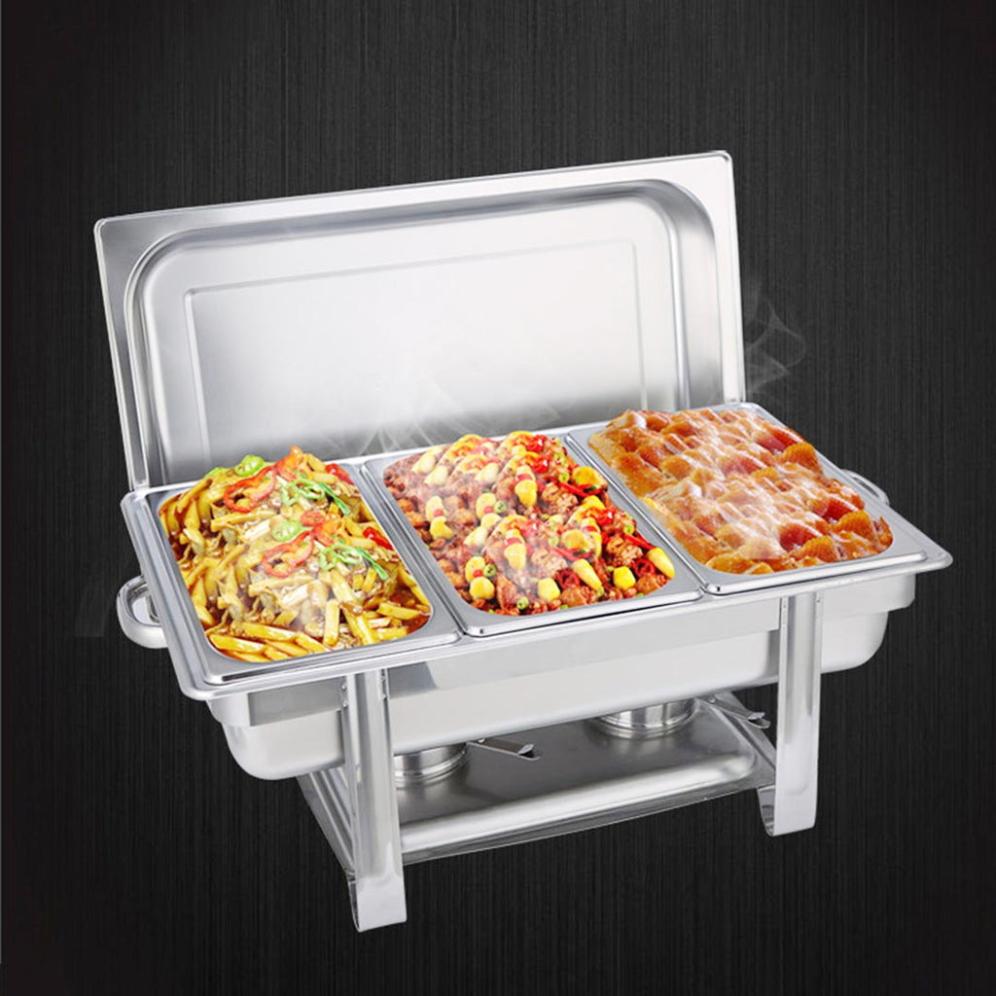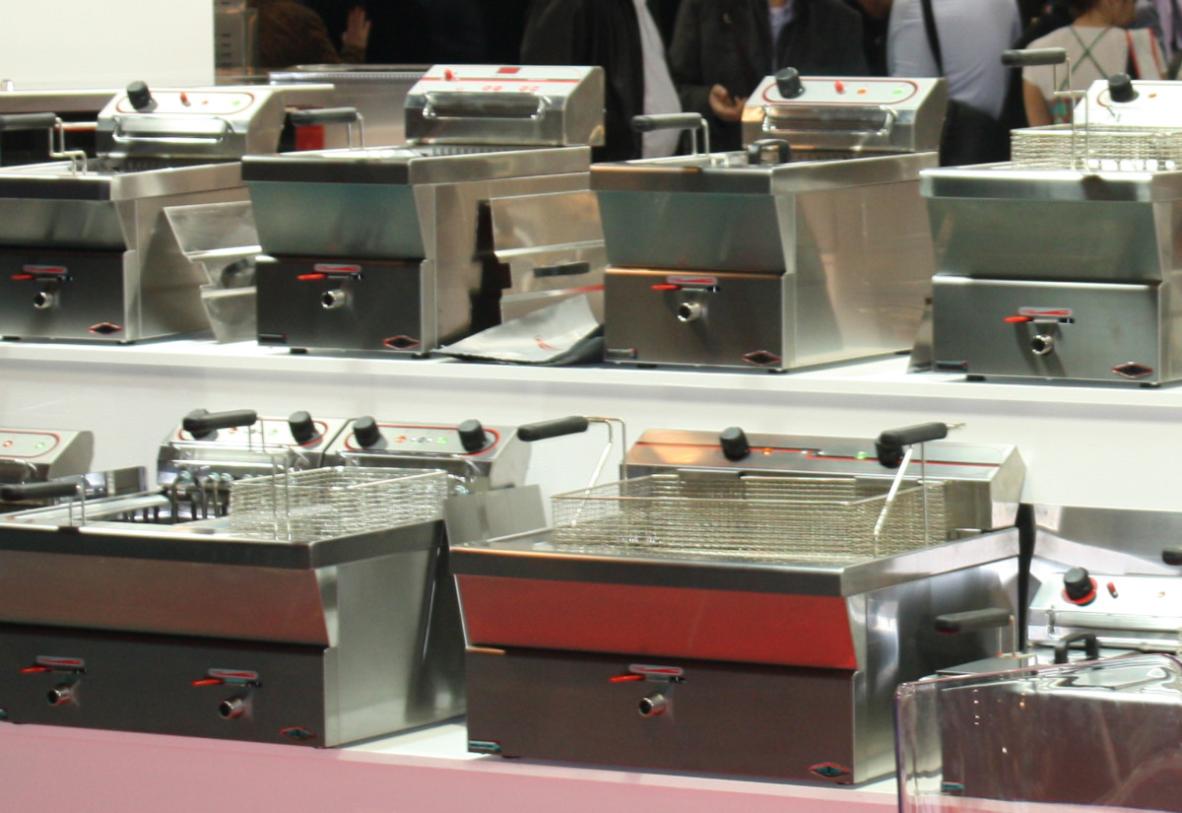What Are the Safety Considerations When Using Catering Equipment?
The catering industry involves the preparation, cooking, and serving of food on a large scale. While this can be a rewarding and enjoyable experience, it's crucial to prioritize safety when using catering equipment to prevent accidents and ensure the well-being of staff and customers.

This article provides an overview of common safety considerations when using catering equipment, covering electrical safety, fire safety, mechanical safety, chemical safety, food safety, and personal safety. By adhering to these safety considerations, catering businesses can create a safe and healthy work environment, minimize risks, and ensure the highest standards of food quality and customer satisfaction.
I. Electrical Safety
- Proper Grounding of Equipment: Ensure that all catering equipment is properly grounded to prevent electrical shocks. Regular inspections and maintenance are essential to maintain proper grounding.
- Regular Inspection of Cords and Plugs: Inspect electrical cords and plugs regularly for signs of damage, wear, or loose connections. Replace damaged cords immediately to prevent electrical hazards.
- Avoiding Overloading Circuits: Avoid overloading electrical circuits by using multiple outlets or extension cords. Overloading can lead to overheating, electrical fires, and potential damage to equipment.
- Use of Circuit Breakers and Fuses: Install appropriate circuit breakers and fuses to protect electrical circuits from overloads and short circuits. Regularly check and replace faulty circuit breakers and fuses to ensure proper electrical safety.
II. Fire Safety
- Proper Ventilation to Prevent Grease Buildup: Ensure adequate ventilation in the kitchen area to prevent grease buildup, which can pose a fire hazard. Install exhaust hoods and fans to remove grease particles and fumes.
- Regular Cleaning of Equipment to Remove Grease and Debris: Regularly clean catering equipment, especially those that involve cooking with oil or grease, to remove grease and debris that can accumulate and increase the risk of fire.
- Use of Fire Extinguishers and Fire Blankets: Keep fire extinguishers and fire blankets readily accessible in the kitchen area. Train staff on how to use these fire safety devices properly in case of a fire emergency.
- Training Staff in Fire Prevention and Response: Provide comprehensive training to staff on fire prevention measures, including proper handling of flammable materials, safe cooking practices, and emergency response procedures.
III. Mechanical Safety
- Regular Maintenance and Inspection of Equipment: Regularly maintain and inspect catering equipment to ensure proper functioning and prevent mechanical failures. Follow manufacturer's guidelines for maintenance and repairs.
- Use of Guards and Shields to Prevent Contact with Moving Parts: Ensure that all moving parts of catering equipment are properly guarded and shielded to prevent accidental contact and injuries to staff.
- Proper Lifting Techniques to Prevent Injuries: Train staff on proper lifting techniques to prevent injuries when moving heavy equipment or supplies. Use mechanical lifting aids, such as dollies or forklifts, whenever possible.
- Training Staff in Safe Operation of Equipment: Provide comprehensive training to staff on the safe operation of catering equipment, including proper handling, cleaning, and maintenance procedures.
IV. Chemical Safety
- Proper Storage and Handling of Cleaning Chemicals: Store cleaning chemicals in a safe and secure location away from food and cooking areas. Follow manufacturer's instructions for proper storage and handling to prevent chemical spills and contamination.
- Use of Personal Protective Equipment (PPE) When Handling Chemicals: Provide staff with appropriate personal protective equipment (PPE), such as gloves, goggles, and respirators, when handling cleaning chemicals or hazardous substances.
- Training Staff in Chemical Safety Procedures: Train staff on chemical safety procedures, including proper handling, storage, and disposal of chemicals, as well as emergency response measures in case of chemical spills or accidents.
V. Food Safety
- Proper Cleaning and Sanitization of Equipment: Regularly clean and sanitize catering equipment, especially those that come into contact with food, to prevent contamination and ensure food safety.
- Use of Thermometers to Ensure Proper Cooking Temperatures: Use thermometers to ensure that food is cooked to the proper internal temperature to eliminate harmful bacteria and prevent foodborne illnesses.
- Following Food Safety Regulations and Guidelines: Adhere to food safety regulations and guidelines set by local and national authorities to ensure the highest standards of food safety and hygiene.
VI. Personal Safety
- Use of PPE Such as Gloves, Aprons, and Hairnets: Provide staff with appropriate personal protective equipment (PPE), such as gloves, aprons, and hairnets, to protect them from potential hazards and maintain a clean and sanitary work environment.
- Proper Lifting Techniques to Prevent Injuries: Train staff on proper lifting techniques to prevent injuries when moving heavy equipment or supplies. Use mechanical lifting aids, such as dollies or forklifts, whenever possible.
- Training Staff in Safe Work Practices: Provide comprehensive training to staff on safe work practices, including proper handling of equipment, safe food preparation techniques, and emergency response procedures.
VII. Creating A Culture Of Safety In The Catering Industry
Creating a culture of safety in the catering industry is paramount to ensuring the well-being of staff and customers. This involves fostering a mindset where safety is prioritized at all levels of the organization. Management should lead by example, demonstrating a commitment to safety and encouraging staff to actively participate in safety initiatives.
Regular safety audits, training programs, and open communication channels are essential for maintaining a safe work environment. By continuously monitoring and improving safety practices, catering businesses can minimize risks, prevent accidents, and ensure the highest standards of quality and customer satisfaction.
Benefits Of Adhering To Safety Considerations
- Reduced Risk of Accidents and Injuries: Adhering to safety considerations significantly reduces the risk of accidents and injuries in the catering workplace, protecting staff and customers.
- Improved Productivity and Efficiency: A safe work environment promotes productivity and efficiency, as staff can focus on their tasks without the worry of potential hazards.
- Enhanced Reputation and Customer Confidence: A catering business that prioritizes safety gains a reputation for reliability and professionalism, which can attract more customers and boost business growth.
- Compliance with Regulations: Adhering to safety considerations ensures compliance with local and national regulations, avoiding legal liabilities and fines.

Safety is a non-negotiable aspect of catering operations. By adhering to the safety considerations outlined in this article, catering businesses can create a safe and healthy work environment, minimize risks, and ensure the highest standards of food quality and customer satisfaction. A culture of safety should be fostered, with management and staff working together to continuously improve safety practices and promote a positive safety mindset.
By prioritizing safety, catering businesses can protect their staff, customers, and reputation, while also enhancing productivity and efficiency. Ultimately, a commitment to safety is an investment in the long-term success and sustainability of any catering business.

YesNo

Leave a Reply